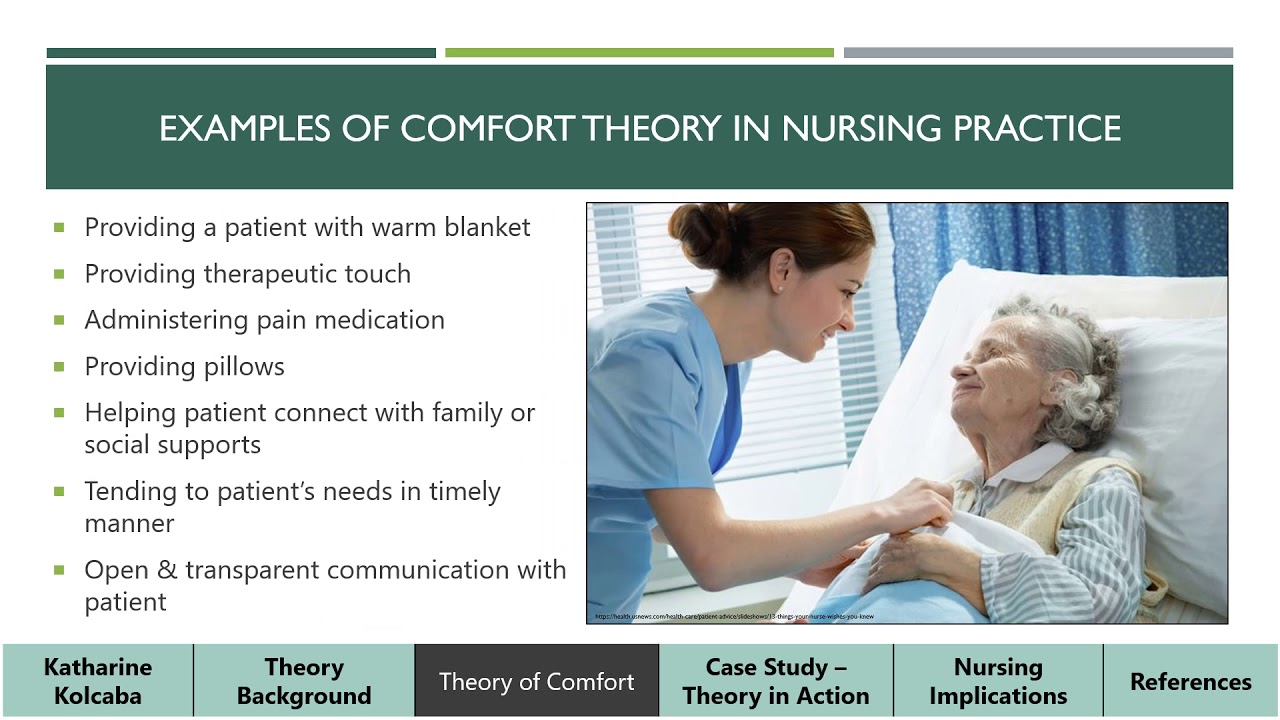Kolcaba’s Theory of Comfort is a middle-range theory for health practice, education, and research that was developed in the 1990s. The theory explains comfort as a fundamental need of all human beings for relief, ease, or transcendence arising from health care situations that are stressful. This theory came up when Katharine Kolcaba conducted a concept analysis of comfort examining literature from several disciplines, including nursing, medicine, psychology, psychiatry, ergonomics, and English. Kolcaba believed that comfort is the product of holistic nursing art. This theory described comfort as an immediate desirable outcome of nursing care. Comfort can enhance behaviors of patients in an effort to find health for patients, family members, and nurses.

According to Kolcaba’s Theory of Comfort, the environment is any aspect of the patient, family, or institutional surroundings that can be manipulated by a nurse or loved one in order to enhance comfort. Similary, nursing is viewed as the process of assessing the patient’s comfort needs, developing and implementing appropriate nursing care plans, and evaluating the patient’s comfort after the care plans have been carried out. Therefore, nursing revolves around assessment of comfort needs, the design of comfort measures to address those needs, and the reassessment of comfort levels after implementation.
Comfort exists in three forms such as relief, ease, and transcendence. Relief occur when the specific comfort needs of a patient are met. An example of relief is prescribing pain medication for a patient reccuperating after an operation. Ease is a form that addresses comfort in a state of contentment an example is when the patient’s anxieties are calmed. Transcendence is a state of comfort where patients are able to rise above their challenges. It is important to note that comfort occur in any of the contexts whether physical, psychospiritual, environmental, or sociocultural.
